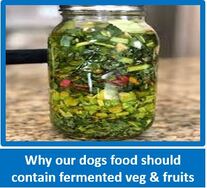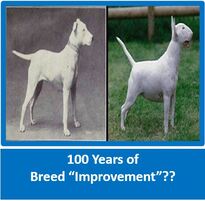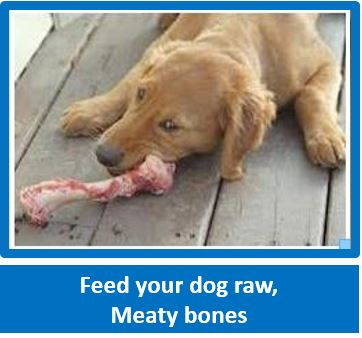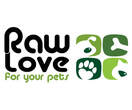
At Raw Love for Pets, we have a great, healthy range of Organic & free range, raw, meaty, venison marrow bones and top-quality chews - a wonderful addition to our Raw Love for Pets, raw food range - do consider our healthy, nutritious treats as well. A raw diet improves the immune system and also assists with multiple health challenges, including allergies, dry & itchy skin, digestive problems, obesity, constipation and many more conditions. Registered with Dept. of Health. Available in Gauteng, Cape Town & Surrounds and KZN. Do have a look at our website at www.rawlovepets.co.za and contact us if you have any questions.
How to Feed Your Dog Raw Meaty Bones
www.diydogmom.com
(Interesting website with free Canine Wellness Course)
www.diydogmom.com
(Interesting website with free Canine Wellness Course)
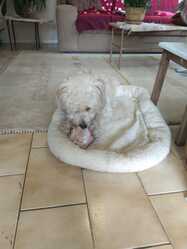
Feeding your dog bone as part of a raw diet can be intimidating and flat out nerve-wracking, especially for first-timer raw feeders. When you feed a dog a ground raw diet that can take away from the scary aspects of things going wrong like choking on a raw meaty bone. However, raw meaty bones are great for dogs to enjoy for a few reasons. The first reason is that you don’t always have to rely on a raw diet consisting only of grinds. The second reason is that feeding raw meaty bones gives your dog the opportunity to comp, chew, and have some mental stimulation along with their meal. Last, and probably the most popular reason people feed raw meaty bones is for the dental hygiene benefits they have for dogs. Raw meaty bones are basically the most natural way to brush a dog’s teeth.
Raw meaty bones as part of a raw diet provide much-needed nutrients as well. The calcium and phosphorus that your dog’s diet requires come from the bone. Below are my tips for feeding raw meaty bones to your dog as part of their raw diet.
What to feed and not to feed –
- Do feed raw meaty bones such as neck bones, thighs, poultry frames, wings, tails, feet, pork or lamb ribs, whole prey or gutted fish
- NEVER feed cooked bones – this is super dangerous and can harm or kill your dog
- Do not feed weight bearing or sharp shank bones
The size of your dog does matter. You should be aware of what your dog can and cannot handle. For instance, my 80lb dog Hudson can handle pork rib bones but my 50lb dog Izzy cannot. I know she isn’t strong enough to handle those types of bones so I never feed them and haven’t even tried.
If you have a small or large dog it is super important to know their chewing style and understand any potential choking hazards in advance.
If you have a small or large dog it is super important to know their chewing style and understand any potential choking hazards in advance.
For first time feeders, don’t just assume your dog can handle a big piece of bone off the bat. You should never start your raw feeding by giving your dog a chicken wing or drumstick. I have seen people complain they just gave their dog a raw meaty bone this way and the dog became painfully constipated which resulted in a vet visit. A proper transition is necessary for newly raw fed dogs.
With regard to chewing style of your dog, if your dog eats super fast or swallows food whole aka a gulper, use my DIY method below to show your dog that they have to chew this. Work your way up to trust that your dog can handle this on their own. Izzy is a gulper and we used this method with her and it worked great! Now I can put a raw meaty bone in her bowl and she does just fine eating it on her own.
With regard to chewing style of your dog, if your dog eats super fast or swallows food whole aka a gulper, use my DIY method below to show your dog that they have to chew this. Work your way up to trust that your dog can handle this on their own. Izzy is a gulper and we used this method with her and it worked great! Now I can put a raw meaty bone in her bowl and she does just fine eating it on her own.
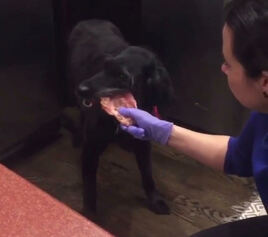
Above is a terribly lit photo but this is my first tip on how to introduce your dog to a raw meaty bone. Get DIY with it especially if your dog is apprehensive and is looking at you like you’re from outer space when you plop down a chicken thigh in their bowl for the first time. Let your dog know that this is OK and you approve. Holding on to the bone and helping them (especially if they are a gulper) is effective and can ease both your minds if this is the first time for both of you.
Give your dog space when eating raw meaty bones. Don’t hover or make your dog nervous or want to hurry up while eating.
Overfeeding one type of bone is not beneficial for your dog. Never just feed one type of bone to your dog. For example, it isn’t safe long-term to only feed turkey neck bones to your dog daily in their meal as their only source of bone. This is because each bone and the meat on that bone has different nutrients. If fed too much, the neck bones can give your dog the possible risk of developing hyperthyroidism because the thyroid gland is located in the neck. As a general rule in raw feeding, you should rotate sources of proteins, muscle meat, bones, and organs so your dog receives a wide variety and a variety of nutrients from different sources.
Overall, use common sense and do your research when starting to feed raw or introducing a new element of the raw food diet to your dog. You know your dog best and are your dog’s advocate
Overfeeding one type of bone is not beneficial for your dog. Never just feed one type of bone to your dog. For example, it isn’t safe long-term to only feed turkey neck bones to your dog daily in their meal as their only source of bone. This is because each bone and the meat on that bone has different nutrients. If fed too much, the neck bones can give your dog the possible risk of developing hyperthyroidism because the thyroid gland is located in the neck. As a general rule in raw feeding, you should rotate sources of proteins, muscle meat, bones, and organs so your dog receives a wide variety and a variety of nutrients from different sources.
Overall, use common sense and do your research when starting to feed raw or introducing a new element of the raw food diet to your dog. You know your dog best and are your dog’s advocate


